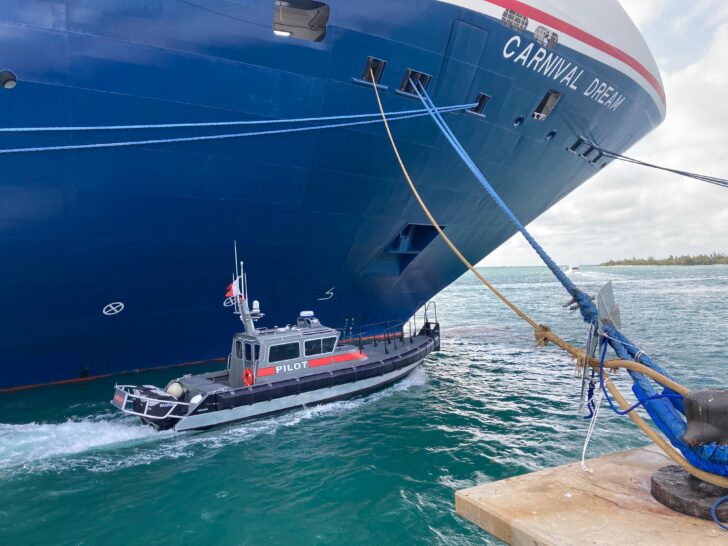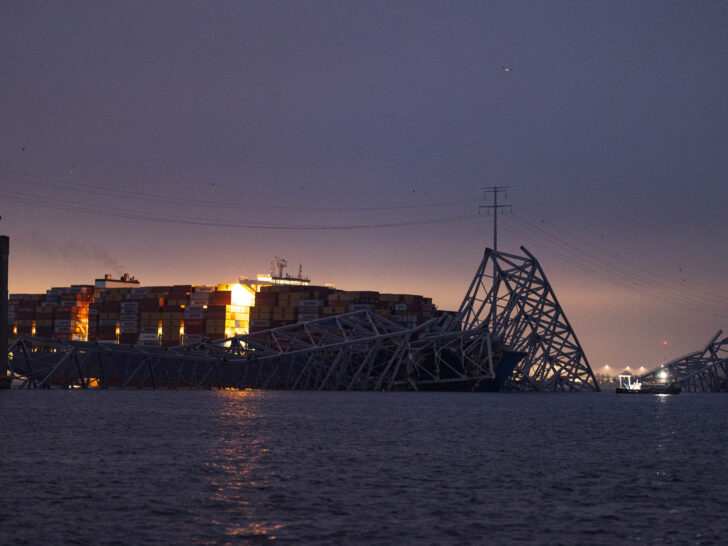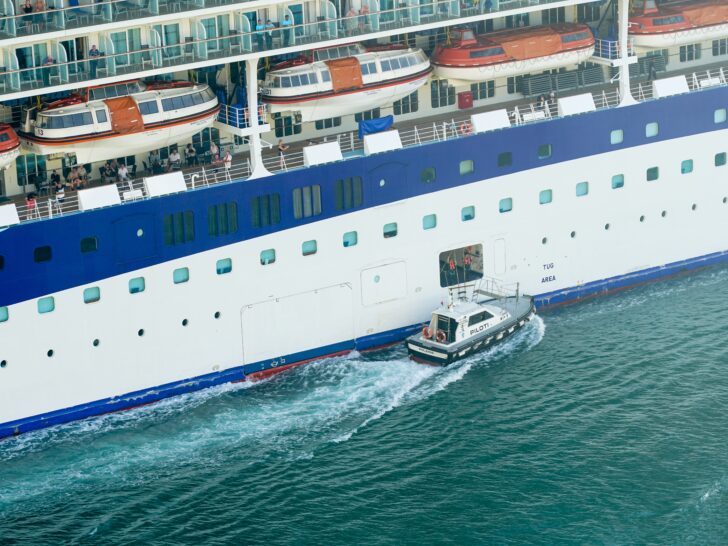Imagine navigating a colossal cruise ship through narrow, winding waterways, with the safety of thousands of passengers resting on every decision you make. It’s a daunting task, but one that often goes unnoticed—except by those who truly understand the perilous nature of the seas. While most people envision the ship’s captain as the ultimate authority, there’s another crucial figure who plays a vital, yet often invisible, role: the ship pilot.
What is a ship pilot? Ship pilots are the specialized mariners who guide vessels through the most challenging parts of their journey, particularly when entering or leaving port. They possess an intimate knowledge of local waters, ensuring that even the largest ships navigate safely through congested or hazardous areas. These pilots have been the unsung heroes of maritime operations for centuries, their expertise critical to the success of every voyage.

But what happens when even the most skilled pilot faces an unexpected crisis at sea? A recent incident in Maryland, where a pilot’s quick thinking was put to the ultimate test as a cargo ship collided with the Francis Scott Key Bridge, reveals just how critical their role can be. This event not only underscores the immense responsibility ship pilots bear but also serves as a stark reminder of the challenges they face daily.
What Is a Ship Pilot?
A ship pilot, often confused with the captain, is a highly trained and specialized mariner responsible for guiding ships through difficult or congested waters, such as ports, rivers, or canals. Unlike the captain, who oversees the entire voyage, a ship pilot’s expertise lies in their intimate knowledge of specific local waters.
Pilots are not permanent members of the ship’s crew. Instead, they are brought on board for a specific, critical purpose: to ensure the safe navigation of the ship as it enters or exits tricky ports or navigates complex waterways. While the ship’s captain may be an expert in open-sea navigation, pilots are experts in the unique challenges of local waters.
A Real-World Example: The Key Bridge Incident
The critical importance of ship pilots was dramatically highlighted in March 2024 when the cargo ship Dali collided with the Francis Scott Key Bridge in Maryland. Despite the presence of a ship pilot on board, a significant portion of the bridge collapsed into the Patapsco River.

As the Dali approached the bridge, it suffered a sudden power failure, leading to a loss of control. Despite the ship pilot’s best efforts to navigate the ship safely away from the bridge, the vessel struck one of the support pillars, causing catastrophic damage. This incident underscores the immense responsibility ship pilots bear and the challenges they face, particularly when mechanical failures occur beyond their control.
While the ship pilot could not prevent the collision, the incident serves as a stark reminder of the vital role pilots play in attempting to mitigate risks in complex and congested waterways. The aftermath of the Key Bridge collapse has led to renewed discussions about the importance of ship pilots and the need for robust emergency response protocols in maritime operations.

When and Why Does a Ship Pilot Board the Ship?
The distinction between a ship pilot and a captain becomes especially clear during the complex process of entering or leaving a port. Pilots typically board the vessel just before it approaches a port or navigates through particularly challenging waters.
The process of boarding is often a delicate operation. Pilots usually transfer from a smaller pilot boat to the moving ship using a ladder—a risky maneuver, especially in rough seas. Once on board, the pilot takes over the ship’s navigation, working closely with the captain and crew to guide the vessel through narrow channels, around underwater obstacles, and against strong currents.

The Critical Role of Ship Pilots in Port Navigation
Ports are busy, congested areas with heavy maritime traffic, making navigation extremely hazardous without expert guidance. This is where the ship pilot’s role becomes indispensable. With their deep understanding of the local environment, pilots ensure that the ship docks safely and efficiently.
The challenges extend beyond simply avoiding other vessels. Pilots must also navigate the ship through underwater hazards, shifting sandbars, and rapidly changing tidal currents. Their expertise allows them to anticipate and respond to these challenges, ensuring that the ship and its passengers remain safe.
Collaboration Between the Captain and Pilot
While the captain retains ultimate responsibility for the ship, the ship pilot’s directions are crucial when navigating local waters. This collaboration is essential for the ship’s safe passage. Pilots bring invaluable local knowledge—such as the precise locations of underwater pipelines or the nuances of local tides—that complements the captain’s broader maritime experience.
In many jurisdictions, using a ship pilot is not just a matter of safety but a legal requirement. This underscores the importance of the pilot’s role and the need for seamless cooperation between the pilot and the ship’s captain.
Safety First: The Ultimate Goal of a Ship Pilot
The primary objective of any ship pilot is to ensure the safe passage of the vessel through challenging waters. By working in tandem with the captain, pilots help prevent accidents, collisions, and damage to both the ship and the surrounding environment.
Their knowledge of local maritime conditions not only protects the ship and its crew but also provides peace of mind for the captain. Knowing that a local expert is on board to guide the ship through potentially dangerous waters can make all the difference, ensuring that the vessel reaches its destination safely and on time.
Who Is In Charge: The Captain or the Pilot?
A common question arises when both the ship pilot and the captain are on board: Who is in charge? While the captain maintains ultimate authority and responsibility for the ship, the pilot controls navigation in local waters. The captain typically follows the pilot’s directions, relying on their specialized knowledge to guide the ship safely through the area.
Pilots undergo rigorous training and possess extensive experience, though their focus is on the specific waters they navigate. In contrast, captains have broader responsibilities, including the overall operation of the ship, safety, and passenger comfort.
Why the Distinction Matters
Understanding the distinct roles of the ship pilot and the captain is crucial for appreciating the safety and efficiency of maritime operations. When pilots and captains work together harmoniously, they ensure the well-being of everyone on board and the safe passage of the ship through even the most challenging waters.
Ultimately, while the captain may hold the highest rank, the ship pilot’s expertise is invaluable, especially when navigating the beginning and end of each voyage. Their contribution to maritime safety cannot be overstated, making them an essential part of every successful journey.
Closing Thoughts
Ship pilots are indispensable to maritime safety. They expertly guide vessels through the most challenging and congested waters with unparalleled local knowledge. Their role, often behind the scenes, is crucial in preventing accidents and ensuring that ships, passengers, and crew reach their destinations safely.

